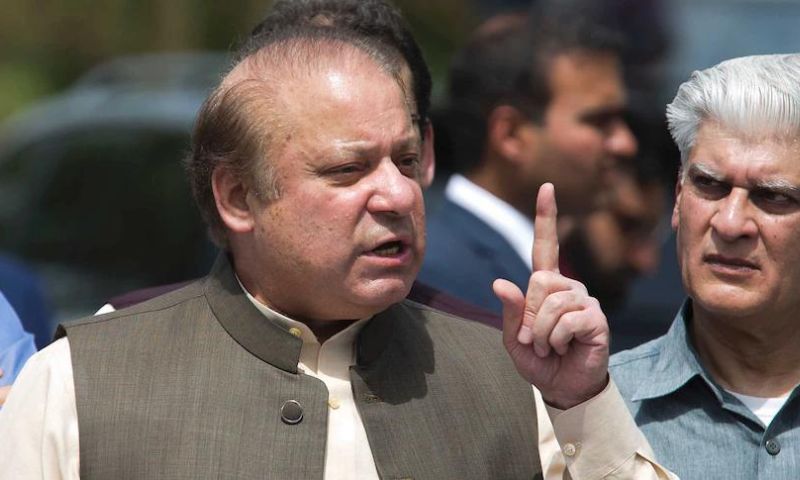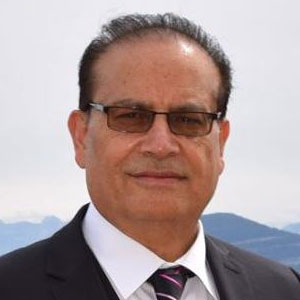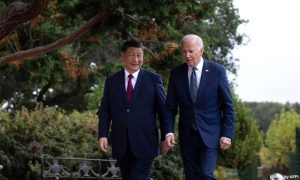ISLAMABAD: The Pakistan People’s Party (PPP) remains steadfast in its determination to participate in the upcoming elections. The Jamiat Ulema-e-Islam-Fazl (JUI-F) has asserted that with the perceived dissipation of Imran Khan’s threat, which had been the ultimate objective of the Pakistan Democratic Movement (PDM), the party anticipates a sweeping victory at the polls. In contrast, the other factions within the PDM, excluding the Pakistan Muslim League-Nawaz (PML-N), the PPP, and the JUI-F, are regarded merely as pressure groups. For these groups, the timing of the elections holds little significance, regardless of whether they are held as scheduled or not.
The recently established Punjab-centric Istehkam-e-Pakistan Party (IPP), spearheaded predominantly by sugar and real estate magnates, finds little significance in elections held on schedule or delayed. Despite possessing substantial financial resources to secure the support of electable candidates, the IPP lacks the charismatic appeal and a strong voter base. In contrast, both the Pakistan Tehreek-e-Insaf (PTI) and Pakistan Muslim League-Nawaz (PML-N) need additional time to adequately prepare for the upcoming elections.
In such a scenarion, elections only suit the PPP, and rightly so. It has publicly been demanding that elections be held on time. It is also challenging for the component parties of the PDM to have the guts to commit themselves to elections. This is due to a variety of factors. The most obvious reason is that both the PTI and the PML-N are in their most vulnerable states. The PTI has been heavily battered by the state and the PML-N by the rising inflation, which has made the common man’s life extremely tough.
Second, Sindh has always been a well-defended stronghold of the PPP and will stay so regardless of how the chess board is laid out during the elections at the centre and in the provinces. Punjab, like Sindh, has historically been the bastion of the PML-N, but this castle was dented by the PTI after the 2018 elections. Though the PTI failed to make a significant dent in the PPP’s power base in Sindh, it did replace the PML-N in Punjab, at the centre, Khyber-Pakhtunkhwa, and, later, in Azad Jammu and Kashmir and Gilgit Baltistan.
Even now, the PPP is unbeatable in Sindh, and if it can collect breakaway electables from the PTI and form an alliance with the newly formed IPP, it may make a significant gain in Punjab and at the centre at the expense of the PML-N, as well as take over space vacated by the PTI in Punjab and Sindh.

This is because the PPP had skillfully played its cards. It wasn’t in direct battle with the PTI, it never crossed the line when it comes to the establishment, and it never took an extreme stance like the PML-N or the PTI on political, security and economic issues. This posture has made the PPP the establishment’s first choice in the current scenario, if the rest of the factors remain constant. The defeat of the PML-N in Punjab in the 2018 elections was attributed to a number of causes, some of which still exist and others have been addressed.
Wounded, defeated, cripled, and broken, the PTI, however, needs more time to regroup and mend fences with real political factors, which PTI previously believed would not react politically and kinetically until May 9, when political factors applied their might in such a way that clearly identified and hammered home the limits of space allocated to politicians, and was a clear command to stay within their skins and allocated space.
The old bread had learned its limits the hard way, taking great care not to cross the redline and remain within the space allotted to them, whereas the new bread of political workers and activists, who had never tasted and felt the state’s might and wrath, were exposed to it for the first time, once they trespassed and entered areas they should not have even in their wildest dreams. The magnitude of the state reaction and the outcome astounded them and their leaders. Both are now in hiding, licking their wounds, nursing their physical and psychological cuts and bruises, and waiting for the mighty’s wrath to calm down and the outcome of recent developments such as the formation of IPP and the recent exchanges of hot words between the PPP and the PMN-L to settle in any direction.
The PTI requires time and space that it currently lacks in order to take a closer look at its objectives, reassess its goals and strategies, rebuild its base of support, and regain the trust of the people by re-portraying itself as a force of change through democratic means rather than confrontation and violence. Right now, the PTI’s best choice is to take a step back and examine what went wrong. What were the party’s objectives? Were they logical? Were the strategies successful? After determining what went wrong, the party may set new goals and techniques that are more likely to succeed.
After being broken to its core, the party must recover the people’s trust by demonstrating its commitment to democratic values, representation of the people’s interests, and commitment to remaining honest and accountable to the people. Although the odds are slim, it has the potential to re-emerge as a force for change by advocating for policies that benefit people rather than opposing the status quo, state elements, state institutions, or international bureaucracy.
The PML-N had a clear agenda in establishing the PDM. Their objectives encompassed the removal of Imran Khan from power, absolving their own leadership from corruption charges, ensuring the imprisonment of Imran Khan, diminishing the influence and potency of the PTI to a point where it posed no further threat, facilitating the return of Nawaz Sharif, and ultimately contesting elections with him as the leading figure.
The grand design was orchestrated with ingenuity and carried out meticulously to achieve these formidable objectives. Nonetheless, it was not solely the strategic brilliance of the PDM that transformed their ideals into tangible outcomes; the PTI’s leadership made a series of blunders that inadvertently played into the hands of their adversaries.
The PTI’s initial move to dissolve the national assembly, initially hailed as a strategic triumph, was later reversed following the Supreme Court’s intervention. In a desperate bid, all PTI members of the National Assembly tendered their resignations, inadvertently paving the way for the PDM to establish a facade of opposition and swiftly gain control in parliament. This allowed the PDM to pass a multitude of laws and resolutions that may not have been approved had the PTI remained in the opposition. Moreover, the PTI leadership dissolved the Punjab and PK assemblies without securing any tangible guarantees or ensuring a written and public agreement, leaving themselves completely exposed, vulnerable, and weakened. These grave missteps, among others, laid bare the PTI leadership’s lack of political astuteness, culminating in the events of the 9th of May and the subsequent disarray within the PTI and its leadership.
First was the anti-incumbency factor which contributed to the defeat of the PML-N because it had been in power in Punjab for two straight terms, and there was a sense of tiredness and unhappiness among certain voters who were yearning for change. This factor is no more relevant now.
The dismissal of Nawaz Sharif as the prime minister by the Supreme Court of Pakistan in July 2017, along with subsequent verdicts against other officials of the Pakistan Muslim League-Nawaz (PML-N), created an image of a party in disarray. With Nawaz Sharif facing a conviction and a lifelong ban from participating in politics, the PML-N is striving to overturn this situation through various measures. One such attempt was the passage of the Supreme Court Procedure and Practices Act, 2023, which was later suspended by the Supreme Court. Now, the party is focusing on amending the election law instead of pursuing a constitutional amendment, a move that sparked controversy shortly after its approval.
The third but decisive factor was the promotion of Imran Khan as the nation’s salvation, whose orchestrated popularity pushed PML-N out of the running for the election. The PML-N never acknowledged its defeat, claiming that the elections were rigged and engineered to favor Imran Khan, but this had no effect. Khan’s charismatic personality, anti-corruption stance, and promises of change resonated with many voters, particularly the youth, resulting in an increase in PTI’s popularity and contributing to the party’s victory. However, this factor is no longer relevant to the impending election. Due to its myopic policies, the PTI has been weakened, its leader has been wounded, and both have become vulnerable. The establishment, which lost its heart to him, became extremely offended by the PTI’s flagrant stance against the state, withdrew its support, and reversed all political capital that was granted to him as a favor and not necessarily as a right.
The fourth factor was The PTI’s campaign in Punjab, which was well-organized, centered on addressing issues such as corruption, unemployment, and economic inequality, and utilized social media platforms effectively. Its grass-roots campaigning enabled PTI to engage with a wide variety of voters. After the unfortunate events of 9 May, however, the PTI’s strength has been severely hampered by the assault on social media activists and journalists. In addition, the other parties are catching up in their use of social media for political campaigning.
The fifth factor that contributed significantly to the PTI’s success in 2018 was the roping of electable candidates by any means possible, and in some cases by coercing them to transfer their allegiance to the PTI. This action substantially strengthened the PTI’s position in Punjab and weakened the PML-N’s. This factor is also no longer effective, as the majority of electables who switched parties and left PTI to rejoin their original party or to join parties that pay them more for their loyalty and services have joined or will join parties that offer higher compensation.
The sixth factor was internal divisions and factionalism within the party, which hindered its ability to present a united front during the elections and weakened the PML-N’s overall appeal in Punjab and the center, were the sixth factor that contributed to its defeat in the 2018 elections. This factor remains alive even today. Ex-prime ministers Khakan Abbasi and Muftah Ismael, as well as many others, are openly criticizing party decisions regarding the economy, ongoing but tense negotiations with the IMF, and the development and dissemination of contradictory narratives on political issues.

Four of the six factors ascribed to PML-N’s defeat in the 2018 elections have been neutralized, one is partially resolved, and only one remains before PML-N gives the green light for elections in October 2023.
As a significant component of the PDM, it is using its influence as a bargaining chip with political and state institutions to secure their full assistance and support in bringing Nawaz Sharif back to Pakistan exonerated of all charges. It persuaded the parliament to pass the Supreme Court Practice and Procedure Act 2023, which was then suspended by the Supreme Court. As a result, it forced the component parties of PDM to pass amendments to the Election Act that changed the limitations on how long a parliamentarian can be disqualified. It remains to be seen how and when the Supreme Court will react to these seemingly incorrect amendments. Once Nawaz Sharif arrives in Pakistan, the second unresolved factor, party disunity, will also be resolved automatically.
If this condition is fulfilled, it would signify that the Pakistan Muslim League-Nawaz (PML-N)’s demand for a fair electoral environment has been satisfied, paving the way for their readiness to participate in elections. However, in the absence of this requirement, and assuming all other variables remain unchanged, the party might seek to postpone elections by an additional year. Nevertheless, the PML-N must also take into consideration the emergence of the IPP, which indicates a lack of complete trust from the establishment towards both the PML-N and the PPP, and suggests a desire to create a hung parliament that can be influenced in either direction as needed. Additionally, the party should recognize that the current momentum favours holding elections and that time is rapidly slipping away.























